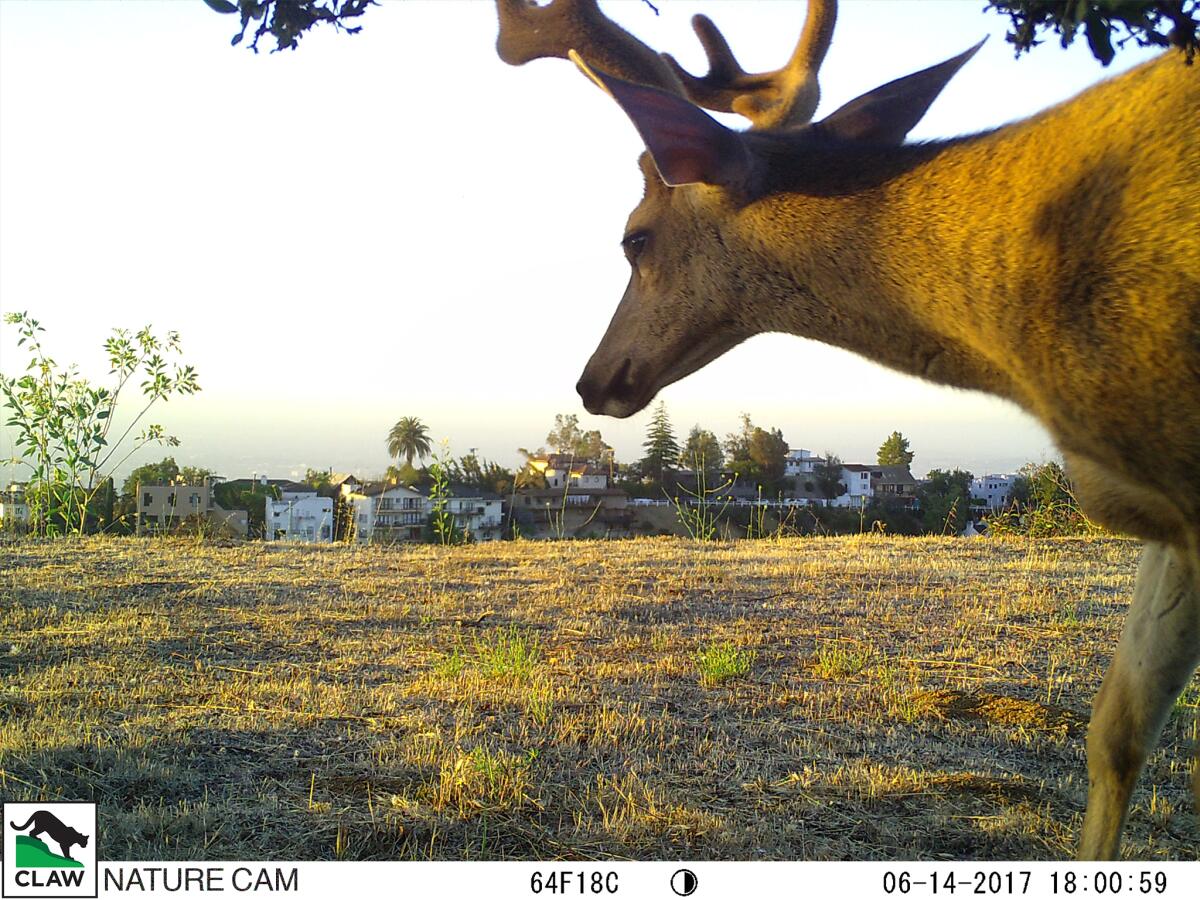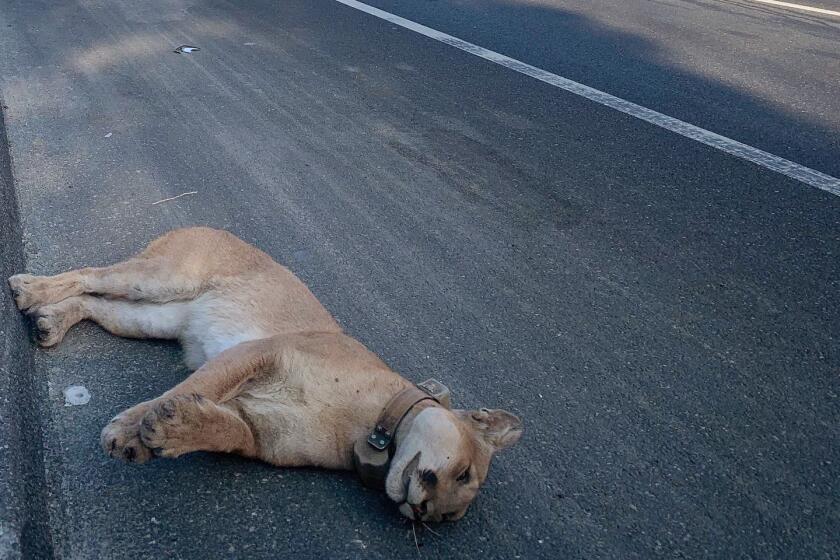Editorial: If we want wildlife to thrive in L.A., we have to share our neighborhoods with them

No one knows exactly how the young male mountain lion found resting near a country club on a busy street in Brentwood last month got there. But he probably left a hillside perch, made his way through a residential neighborhood, then crossed San Vicente Boulevard. Had he never been spotted (and tranquilized and returned to the Santa Monica Mountains without incident) he would have probably hunkered down under cover of trees, waited for night and then returned to the hills.
Although a daytime sighting of a mountain lion in an urban neighborhood is rare, Los Angeles abounds with wildlife. For decades, development has encroached upon open space and hillside habitats, endangering the existence of Southern California mountain lions and other animals and species of plants. Now, the city is creating its first wildlife ordinance that would comprehensively regulate development to protect the biodiversity of Los Angeles.
Eight years ago, City Councilman Paul Koretz introduced a motion calling upon the planning department to craft a wildlife ordinance. When the necessary funding for this effort was finally allocated to the department three years ago, it began working with ecologists, the Santa Monica Mountains Conservancy and community wildlife advocates, including Citizens for Los Angeles Wildlife, to strike a balance between allowing new construction while ensuring the survival of the wild animals that are living on this land.
Four mountain lions have been killed this year trying to cross roads and highways near the Santa Monica Mountains. Let’s help them across the road with a new law.
On Nov. 17, the ordinance goes to the Planning Commission, which can recommend approval to the L.A. City Council or ask for changes before doing so. The City Council has to vote it into law.
The proposed ordinance would create a wildlife district in the Santa Monica Mountains, between the 405 and 101 freeways that includes neighborhoods in Studio City, the Hollywood Hills and Bel-Air. Within that district, the city would dictate how much of the lot can be covered by structures, the height of homes, the type of outdoor lighting and the landscaping required. The ordinance also addresses the kinds of fencing materials allowed, so animals won’t get injured, and the treatments of glass windows over a certain size to discourage animals from running into them.
The goal is to maintain and enhance habitat so that animals can travel through these areas easily without getting blocked or hurt, and to have plantings that are fire-resistant and native to the environment as well as provide food for animals.
The ordinance would apply only to new construction, extensive remodeling of the existing structures or an addition 500 square feet or more. The wildlife district could be expanded in the future to include other areas of the city with wildlife and plant populations that should be protected.
The proposal has faced opposition from some hillside residents who say they love wildlife — “I have 10 bird feeders on my property,” said one homeowner — but saw the ordinance as a violation of property rights.
It’s not. The proposed ordinance places reasonable restrictions on private land located in sensitive habitat to protect the wildlife and biodiversity that are unique to Southern California. In fact, some wildlife experts argue the current proposed ordinance isn’t as strong as it should be.
The planning department initially proposed restricting all houses and other structures on parcels in the wildlife zone to 50% of the lot. Owners of smaller single-family lots, however, complained vociferously that it was too onerous to comply with. So, in the current draft, the department exempted smaller single-family lots, which make up about 6% of 23,000 acres within the proposed district.
Experts who have spent years studying wildlife connectivity paths through this area say it is the smaller parcels that, once they are built up, could close off a last remaining cut-through or pathway for wildlife. That would undermine what the city should be trying to do, which is to help the movement of animals across this entire district.
A wildlife ordinance is a necessary tool for maintaining the biodiversity in hillsides where it’s dwindling. The only way to do that is to make sure these habitats don’t get overbuilt. That means some restrictions on land use. Los Angeles is not the first region to create a wildlife ordinance. Ventura County passed one in the last few years that protects a chunk of the county.
If there are no corridors for wildlife movement and if excessive excavation of dirt to build bigger, taller houses erodes the slope of a hillside, then we are slowly destroying wildlife habitat. For those people fretting about what this will do to their property values — isn’t open space, trees, and wildlife an amenity in these communities?
Animals need to be able to live among us and cross through our neighborhoods and spaces, without them endangering us and without us endangering them.
More to Read
A cure for the common opinion
Get thought-provoking perspectives with our weekly newsletter.
You may occasionally receive promotional content from the Los Angeles Times.











